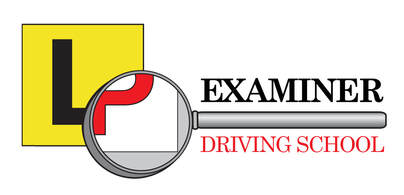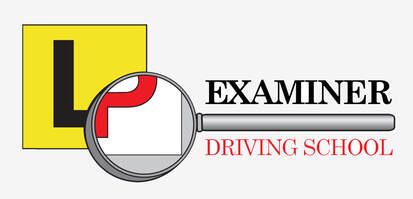|
What sets a standout driver apart from the rest? They can predict and react to hazards long before they become imminent. At Examiner Driving School, we're passionate about more than just teaching the basics. We're here to help you learn safe driving by equipping you with the insight to identify potential dangers and the skills to navigate them. Our Safer DRIVERS Course or Learner Safer Driving Course sharpens your hazard perception. It transforms you into a professional driver-guardian of the road. Ready to elevate your driving skills to where safety and foresight seamlessly converge? We're here to guide you, making every lesson a step towards mastering the art of safe driving. Understanding Hazard PerceptionHazard perception is the manner of identifying and responding to potential dangers before they become imminent threats. It's a critical skill that every driver must develop, not just for passing the hazard perception test but for lifelong safe driving. The Safer DRIVERS Course or the Learner Safer Driving Course is meticulously designed to enhance your hazard perception skills, making you adept at anticipating and mitigating risks on the road. The Role of Safe Driver Course NSWEnrolling in a Safer DRIVERS Course NSW is more than just a step towards becoming a proactive driver. It's a leap towards redefining your approach to driving altogether. These courses go beyond the theoretical, offering interactive sessions packed with practical, real-world driving experiences. They are designed not just for passing tests but for instilling lifelong safe driving habits. By participating, learners don't just hear about safe driving. They live it through discussions and scenarios reflecting the daily challenges and decisions drivers face. Learner Safer Driving Course’s Key Components
Strategies for Mastering Hazard PerceptionStay Alert and Observant: Your best defence on the road is active awareness. By keeping your gaze not fixed but constantly scanning, you prepare yourself to anticipate and react to the unpredictable, making the road safer for everyone. Understand Defensive Driving: This proactive approach to driving is your safeguard against the unexpected. By mastering defensive driving, you learn not just to react to the road as it is, but to anticipate it as it might be, adjusting your speed and position to maintain safety. Practice Makes Perfect: There needs to be a teacher-like experience. Our Learner Safer Driving Course doesn't just give you the tools. It comes with a workshop to hone your skills, offering varied driving experiences to build your on-road confidence and competence. Learn from Real-Life Scenarios: We bring the real world into the classroom, using case studies and scenarios drawn from actual driving experiences to provide a comprehensive, grounded understanding of hazard perception and response. Utilise Technology: Learning to drive safely means learning with the best tools. Our state-of-the-art simulators and interactive modules offer a risk-free environment to practise and perfect your hazard perception skills. Why Choose Examiner Driving School?Choosing Examiner Driving School means choosing a legacy of excellence. As a family-run school with over a decade of experience, we pride ourselves on creating safe, skilled drivers. Our recognition as a registered provider from Transport NSW is not just an accolade; it's a promise of the quality and effectiveness of our Safer DRIVERS Courses. With us, you're not just learning to drive; you're learning to navigate life's roads with confidence and care. Your Path to Becoming a Safer DriverChoosing to learn with us isn't just about ticking a box for your driving test; it's about committing to a lifestyle where safety and awareness lead the way every time you hit the road. The Safer DRIVERS Course helps you navigate the hazard perception test with ease. It also aims to sow the seeds of vigilant, mindful driving practices that will stand the test of time and protect you and your loved ones. Your Next StepsAre you poised to redefine your driving experience, elevating it from routine to remarkable, ensuring that every time you're behind the wheel, you're not just driving but championing a cause for safer roads? Take the decisive step towards an on-road custodian of safety, by practising the Hazard Perception Test and enrolling in our Safer DRIVERS Course to become part of a community dedicated to making every road safer for everyone. Get into the wealth of resources and expertise that Examiner Driving School offers. Contact us now at (02) 9715 1571.
1 Comment
Are you gearing up to take your driving test in Sydney? Passing your driving test is a significant milestone in becoming a licensed driver. At Examiner Driving School, we understand this moment's importance and are here to help you prepare effectively. Our team of experienced and qualified driving instructors has guided learners in the INNER WEST suburbs of Sydney for 28 years, achieving an impressive 93% first-time pass rate. This blog will share ten tips to help you prepare for and pass the driving test.
Tips to Pass Your Driving Test 1. Start with Professional Lessons Enrolling in professional driving lessons is the first step to preparing for your driving test. At Examiner Driving School, we offer personalised driving programs tailored to your needs. We will teach you the essential skills and road safety knowledge to become a confident and safe driver. 2. Familiarise Yourself with the Test Area Understanding the test area can significantly boost your confidence. Spend time driving in the area where your test will be conducted. To be better prepared, pay attention to speed limits, road signs, and common intersections. 3. Practise Defensive Driving Defensive driving is essential to pass your test and, more importantly, stay safe. Learn to anticipate and react to potential hazards, maintain a safe following distance, and always obey traffic rules. 4. Mock Tests and Practice Exams Take advantage of mock tests and practice exams to simulate the test experience. It will help you become familiar with the format, time constraints, and questions you might encounter. 5. Master Parallel Parking Parallel parking is often a challenging part of the driving test. Practise this skill until you can confidently park your vehicle in tight spaces. Remember to use your mirrors whilst doing your blind spot checks (head checks) effectively and taking your time. 6. Stay Calm Under Pressure Nervousness is natural before a driving test, but staying calm is crucial. Take deep breaths, focus on the road, and remember your training. Confidence goes a long way in demonstrating your ability to drive safely. Knowledge = Success. 7. Know Your Vehicle Familiarise yourself with the car you'll be using for the test. Understand its controls, including lights, indicators, windshield wipers, and horns. Knowing your inside-out vehicle will make you feel more in control during your driving test. 8. Follow Test Instructions During the test, carefully listen to and follow the examiner's instructions. Communicate clearly and ask for clarification if needed. Pay attention to details like speed limits and road signs. 9. Stay within Speed Limits Adhering to speed limits is crucial throughout your test. Excessive speeding is a common reason for failing the driving test. Always obey posted speed limits and adjust your speed accordingly. 10. Don't Rush Lastly, take your time with the test. Take your time to make safe decisions and execute manoeuvres accurately. Rushing can lead to mistakes that could fail. Pass Your Driving Test with Examiner Driving School It is a significant achievement to pass your driving test. With the proper preparation, you can increase your chances of success. At Examiner Driving School, our dedicated team of instructors is committed to providing you with the skills, awareness, and knowledge needed to become a confident and safer driver for life. If you're ready to start your journey towards obtaining your driver's licence, contact our friendly team on (02) 9715 1571 or 0415 380 435 to book your lessons or register on our website here. Frequently Asked Questions (FAQs) How many driving lessons do I need to pass my test? The number of lessons you need can vary depending on your experience and confidence levels. Our instructors will assess your abilities and recommend a personalised lesson plan. Can I use my vehicle for the driving test? You can use your vehicle for the test, but it must meet specific requirements. Ensure that your vehicle is roadworthy, registered, and adequately insured. How long is the driving test? The driving test typically lasts around 30 to 45 minutes. For 30 to 35 minutes you'll be evaluated on various aspects of your driving skills, including manoeuvres and your ability to follow road rules. What happens if I fail the driving test? Don't be discouraged if you don't pass your driving test on your first attempt. You can schedule a retest and continue practising with the guidance of our experienced instructors to improve your skills. Is the driving test different in each state of Australia? Yes, the driving test can vary slightly from state to state. Familiarising yourself with your state's specific requirements and regulations is essential. Remember these tips to pass the driving test as your quick guide to success. It is a significant step towards gaining the freedom and independence of having a driver's licence. With the proper preparation and guidance from Examiner Driving School, you'll be well on your way to success. Contact us for professional driving lessons and expert support. Why wearing a seatbelt is important!
Drivers and front-seat passengers, reduce the risk of death by 45% and cut the risk of serious injury by 50% by wearing a seat belt. Furthermore if you don't wear a seat belt, you are 30 times more likely to be ejected from a vehicle during a crash. So buckle up every time! What rules apply to Child Restraints? Children aged under 7 years must use an approved suitable child restraint when travelling in a vehicle. A child restraint is a forward‑facing or rear-facing child car seat, or a booster seat. To be approved, child restraints must meet Australian/New Zealand Standard. The driver is responsible for children aged under 7 years being secured by an approved child restraint suitable for their age and size.
How to Fit Them?
Information Provided by TfNSW What is an AIR-BAGS purpose? Air-bags reduce the chance of your head or upper body colliding with the vehicle's interior during a car crash. To avoid an air-bag-related injury, make sure you are properly seated and have your seat belt on correctly because air-bags are designed to work with your seat belts, not to replace them. Where are they located in the Car? Air-bags can be build into the dashboard, steering wheel, seats, doors and in the sides of a vehicle. How do they work? If a crash occurs, your airbag will deploys in a split second. As the car sensors detect the sudden dramatic change of speed and sends an electric signal to an ignitor. This generates heat and a chemical reaction occurs, which inflates the car's air-bags. Should I ensure the car I drive has Air-Bags? According to TfNSW driving a car with side airbags, your chance of a serious head injury is about 1%. But without side airbags, this jumps to 98 per cent. With such a huge reduction in injury statistics with the inclusion of only one set of air-bags, we believe the answer is undeniably YES! See how side airbags could save your life in a side-on crash into a pole or tree below: |

